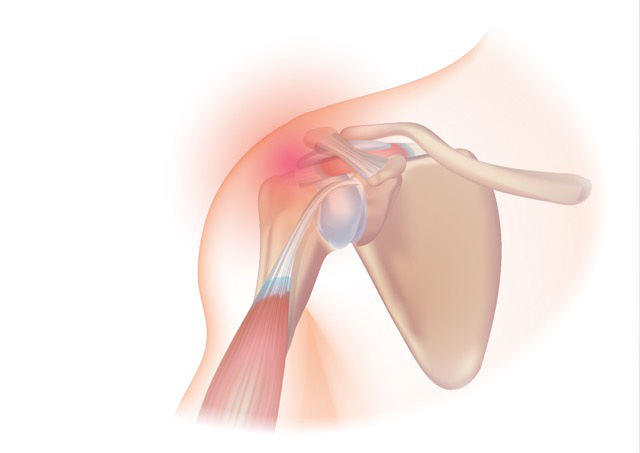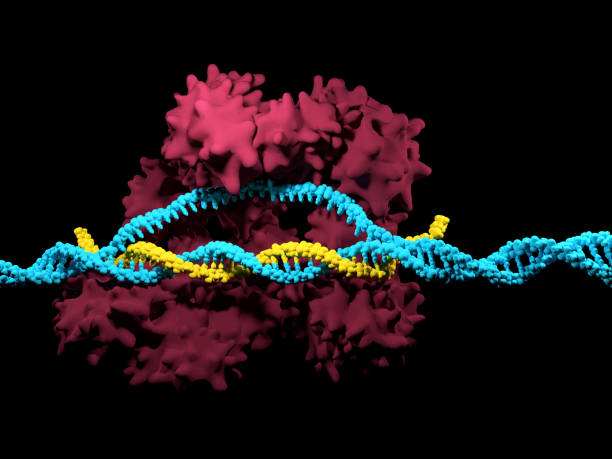Stress is a universal human experience. It creeps into our minds during traffic jams, fills our chests during arguments, and drapes itself across our shoulders during sleepless nights. But when it comes to how stress affects women, the story becomes far more intricate—woven with biological rhythms, hormonal tides, social expectations, and emotional labor. Women do not merely feel stress; they often live inside it, balancing invisible pressures that the world doesn’t always recognize.
Science now confirms what many women have long known instinctively: their experience of stress is qualitatively different from men’s. From the cellular response to emotional triggers, to the long-term impact on health and relationships, the female stress experience is shaped by a symphony of physiological, psychological, and societal factors that interact in complex ways. This is not just about hormones—though they play a starring role—it’s also about the roles women are expected to play, the voices they suppress, and the strength they are often forced to summon.
In this article, we dive deep into the biology, psychology, and cultural weight of female stress. We’ll explore why women may feel stress more intensely, how their bodies respond differently, and what it means to carry the kind of mental load society often hands them without consent. This isn’t just about managing stress—it’s about understanding it through a woman’s lens.
The Stress Response: Same System, Different Symphony
To understand how stress operates differently in women, we first need to look at the body’s natural response system: the hypothalamic-pituitary-adrenal (HPA) axis. This is the command center of the stress response. When a threat is perceived, the HPA axis is activated, releasing stress hormones like cortisol and adrenaline to prepare the body for a classic “fight or flight” reaction.
But women’s stress response, while using the same biological hardware, often plays out differently. Research shows that estrogen and progesterone modulate the stress response in unique ways. Estrogen, in particular, appears to amplify the release of cortisol, especially during certain phases of the menstrual cycle. Women also have higher levels of oxytocin, sometimes referred to as the “bonding hormone,” which can influence how stress is processed emotionally and socially.
In 2000, psychologist Shelley Taylor proposed an alternative to the “fight or flight” model—coining the phrase “tend and befriend” to describe how women often respond to stress. According to this theory, women are more likely to seek social connection and protect offspring when stressed, rather than fleeing or fighting. This biological drive toward nurturing and social support is shaped by evolution and linked to oxytocin release. But in modern life, this instinct can create tension when women are overburdened by caregiving and expected to hold everything together, even while falling apart inside.
Hormonal Havoc: How Fluctuations Shape the Storm
Women’s hormones aren’t just monthly inconveniences—they are powerful messengers that influence the nervous system, emotional regulation, and even the immune response. The fluctuations in estrogen and progesterone across the menstrual cycle—and more dramatically during pregnancy, postpartum, perimenopause, and menopause—alter how stress is felt and processed.
During the luteal phase (the second half of the menstrual cycle), progesterone dominates, and many women report increased anxiety, mood swings, and irritability. In women with premenstrual dysphoric disorder (PMDD), these hormonal shifts can trigger severe emotional responses that mimic depression and anxiety disorders, amplifying their stress experience. Hormones can also affect sleep, pain sensitivity, and energy levels—all of which influence stress resilience.
In pregnancy, cortisol levels rise steadily, and while this is a natural adaptation to support fetal development, it also makes the mother more vulnerable to stress. Add sleep deprivation, physical discomfort, and the existential anxiety that often accompanies impending motherhood, and it’s no wonder that perinatal stress is so prevalent.
Menopause brings another wave of hormonal change, often accompanied by mood instability, hot flashes, and sleep disturbances. The decline in estrogen can reduce stress resilience and contribute to the emotional fragility many women describe during this life stage. Unfortunately, society often dismisses these shifts as trivial or exaggerated, leading women to question their own experiences rather than receive support.
Emotional Labor: The Hidden Weight of Being ‘Fine’
Perhaps one of the most underappreciated factors in how women experience stress is the emotional labor they perform daily. Emotional labor refers to the often invisible work of managing emotions—both one’s own and those of others. It includes smoothing over awkward conversations, remembering birthdays, managing the household calendar, comforting upset children, and checking in on others’ feelings—even when one’s own are in crisis.
Women are often socialized from a young age to be caretakers, peacekeepers, and emotional regulators. This isn’t just a cultural observation; it’s backed by psychological research. Women are more likely than men to report rumination, the repetitive mental replaying of stressful events. While rumination can increase self-awareness, it can also fuel anxiety and depression, particularly when combined with chronic stress.
In the workplace, emotional labor might look like smiling through misogyny, comforting a coworker who’s upset, or absorbing criticism without reacting emotionally. At home, it might mean keeping track of kids’ appointments, soothing a partner after their bad day, or making dinner while managing an internal emotional breakdown. This kind of stress doesn’t show up on a timesheet, but it chips away at energy and mental health just the same.
Because emotional labor is rarely acknowledged or rewarded, it becomes a form of psychological taxation—depleting reserves without replenishment. And when emotional labor is performed on top of traditional labor (household chores, job responsibilities, caregiving), the result is often burnout cloaked in competence.
The Stress Gap: Why Society Expects Women to Hold More
According to numerous studies, women report higher levels of chronic stress than men. They are more likely to feel overwhelmed, anxious, and emotionally drained. But it’s not just perception—it’s a reflection of lived reality. Part of the explanation lies in the gender stress gap, which is deeply rooted in social roles and expectations.
Women still carry the lion’s share of domestic responsibilities, even when working full-time. They are more likely to be primary caregivers—not just for children, but also for aging parents and other family members. They’re expected to be nurturing, organized, emotionally available, physically attractive, and endlessly self-sacrificing. They are told to “lean in” at work, but also to lean into motherhood, marriage, wellness, and self-improvement.
Social media only compounds this pressure. Platforms curated with images of effortless parenting, clean homes, yoga-toned bodies, and inspirational quotes can leave women feeling as though everyone else is coping better. The result is a toxic brew of comparison, guilt, and internalized failure—even when they’re doing everything right.
And yet, when women express stress, they are often invalidated or pathologized. They’re told to calm down, to stop being dramatic, or to “just relax.” This gaslighting of female stress not only minimizes their reality but can delay important interventions, such as therapy or medical care.
Mental Health and the Gendered Cost of Stress
The toll of stress on women’s mental health is significant. Women are twice as likely to be diagnosed with anxiety and depression as men. While part of this may be due to biological vulnerability, it’s also a function of social context and chronic stress exposure.
Stress in women is more likely to manifest as internalizing disorders—conditions that involve inward-focused symptoms such as sadness, fear, withdrawal, and fatigue. Men, by contrast, are more likely to experience externalizing disorders such as substance abuse or aggression. This difference can skew perceptions of who is “sick” and who is “coping,” often leading to underdiagnosis or misdiagnosis in women.
Post-traumatic stress disorder (PTSD) also presents differently in women. They are more likely to develop PTSD after trauma and often experience symptoms like emotional numbing, dissociation, and hypervigilance. Women’s traumas—such as sexual assault, domestic violence, or medical trauma—are often minimized or ignored, leaving them to quietly suffer in the shadow of unacknowledged pain.
Women are also more likely to experience comorbid conditions, such as anxiety and chronic pain or depression and autoimmune disorders. These mind-body connections are frequently misunderstood, and women’s pain is often dismissed as psychosomatic, leading to long and frustrating journeys through the healthcare system.
Coping Strategies: Resilience, Relationships, and the Search for Relief
Despite all the challenges, women have also developed unique and powerful coping mechanisms. Social connection remains one of the strongest buffers against stress, and women tend to maintain stronger emotional networks than men. Friends, sisters, mothers, and even online communities can offer the kind of support that soothes the nervous system and heals the spirit.
Women are also more likely to seek help—whether through therapy, self-help resources, or conversations with loved ones. This willingness to share and process emotions can build resilience and lead to better long-term outcomes, especially when stress is chronic or trauma-related.
Mindfulness practices, creative expression, physical activity, and setting boundaries are increasingly part of the modern woman’s stress toolkit. Still, these tools work best when paired with systemic support, including flexible workplaces, affordable childcare, mental health services, and policies that recognize the burden of caregiving.
What women need is not just permission to take care of themselves—but a cultural shift that stops expecting them to carry everything alone.
The Road Ahead: Rethinking Stress Through a Gender Lens
Understanding how women experience stress differently isn’t about making stress a competition. It’s about visibility. It’s about acknowledging the unique biology, socialization, and structural inequities that shape women’s mental load—and doing something about it.
Healthcare providers must be trained to recognize the gendered patterns of stress and mental health. Workplaces must offer policies that support caregivers, promote equity, and normalize mental health days. Partners must step up, not as helpers but as equals. And women themselves must be allowed to rest, to rage, to say no, and to ask for more.
Because the truth is: stress is not just a feeling. It’s a full-body, full-life experience—and for women, it’s one that often comes with no off switch and no safety net.
But by bringing this truth to light, by giving women language for their lived experiences, we begin to shift the narrative. We begin to imagine a world where stress is not a silent burden but a shared responsibility—where women are not only seen but supported.
And maybe, just maybe, in that world, women will finally be able to exhale.






